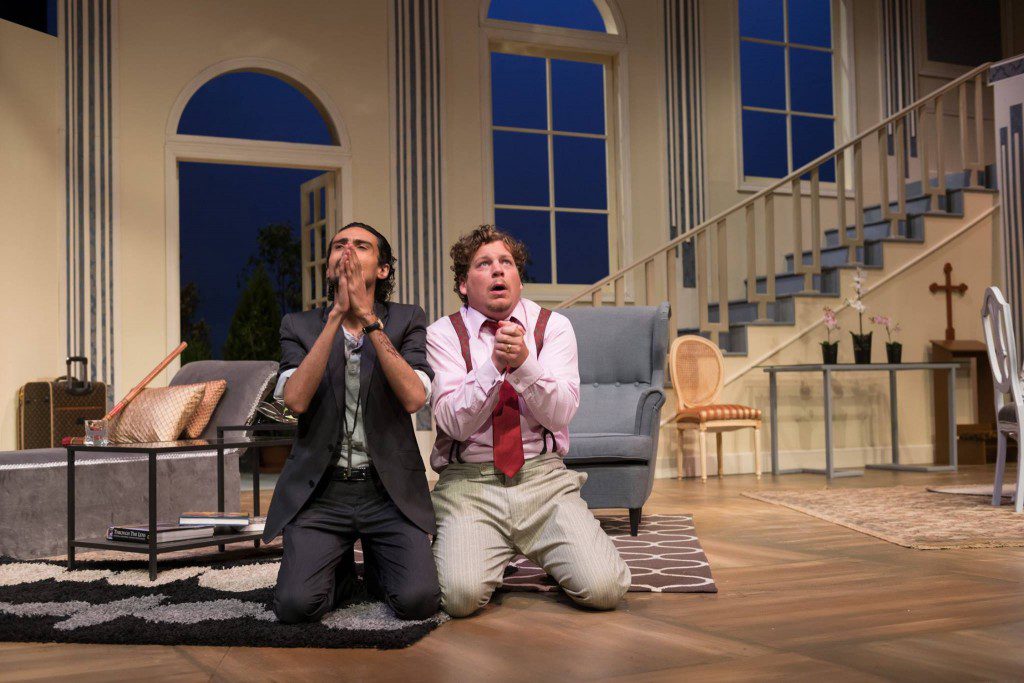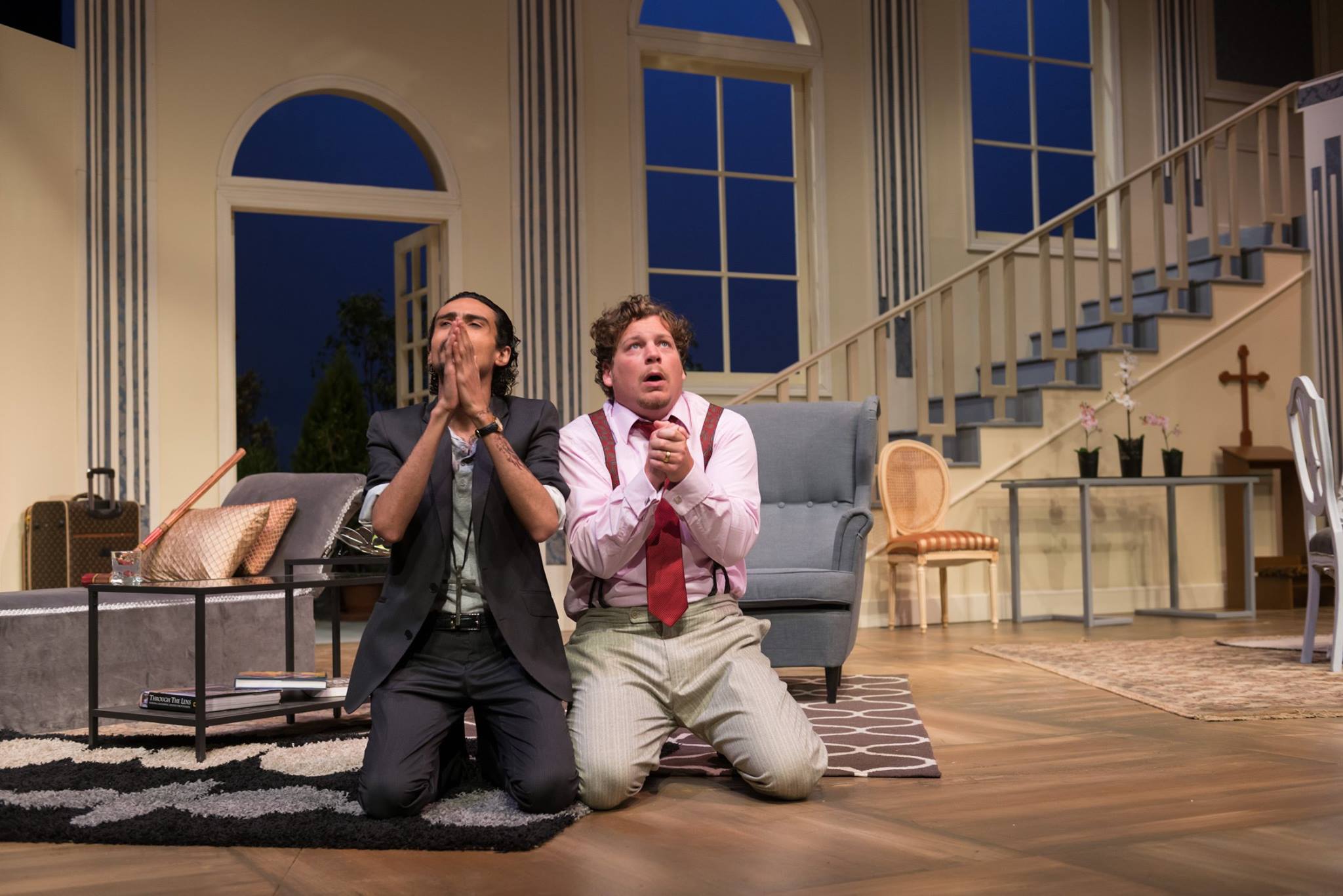BY DEENA SABRY and SALMA RIZK

When the lights dimmed and the curtains parted for the opening night performance of theatrical comedy Tartuffe on March 16, Malak Gabr theater had already been filled to the brim.
Written by French playwright Moliere in 1664, Tartuffe was instantly banned following its first performance in front of King Louis XIV as it boldly questioned religious authority in a time where this was almost blasphemous.
The play revolves around its namesake, hypocritical pious protagonist Tartuffe, who is staying at the Orgon family household.
Orgon and his mother practically worship Tartuffe, and are blind to his discrepancies; even his attempt to seduce Elmire Pernelle, Orgon’s wife. However, Elmire hatches a plan to show Orgon Tartuffe’s true colors.
The most intriguing aspect about this play is the clever manner in which the script is written. The version performed on the Malak Gabr stage was translated in 2008 by American playwright Constance Congdon in a way in which all of the characters’ lines rhyme.
The actors took this in their stride, which was evident from their jovial energy emanating from the stage.
Reflecting on her experience, visiting director Jane Page told The Caravan she had a “fantastic” time working on the show. The cast and crew, she explained, were tireless in their determination and willingness to explore the play and its re-imagined contemporary American context.
“I cannot remember another group of students anywhere who were so dedicated and positive,” she said.
Gavin Cameron-Webb, Page’s husband, acted as the interim director when Page had to leave a week prior to opening night for a previous commitment in California.
When comparing the actors of Tartuffe to student actors he had directed in the US, he said that, “they do terrifically well here, because they’re working in a language which is not their own. I have nothing but praise for them”.
“They have such different personalities, but they’re so complementary,” said Scenery & Lighting Designer Andrea Heilman.
“Jane had sculpted this beautiful show and given it such great structure, and then Gavin went in and did these little tweaks –like Marianne throwing the handkerchiefs over the balcony– and it was so much fun to watch.”
Although Page made clear that the play is set in contemporary times, in an affluent “McMansion,” the costumes belie this. There is no doubt that the costumes give the audience a sense that the family is a wealthy one; however, the characters looked like they belonged five decades behind in the 1960s.
What was confusing was the fact that two of the characters, Damis Pernelle, Orgon’s son, and Dorine, the house help, were dressed in very modern, casual outfits that heavily contrasted those of the other characters.
Pernelle was dressed like a typical 90s burnout, in cargo shorts and a baseball cap, while Dorine was dressed in baggy ankle-length jeans, a t-shirt, and an anklet. Their appearance heavily contradicted that of the other characters, who were dressed in suits and formal dresses.
Pernelle and Dorine’s costumes definitely portrayed the characters’ personas; however, it did not feel like all of the characters fit in the same era.
Another disparity was towards the final act, when all of the characters were drinking out of Starbucks cups, which seemed to contradict their old-fashioned setting and costumes, but made the audience laugh raucously nonetheless.
What was most interesting about Tartuffe was its timeless theme. Although it was written in the mid-17th Century, the concept of priests or other religious figures using religion as a means to achieve certain goals and agendas applies no matter which era you look at.
It was relevant in mid-17 Century France, and it remains relevant in the 21st Century Middle East.
Tartuffe is the first production following the increase in the department budget. The theater program had been suffering budget cuts over the years and is currently facing a shortage of full-time faculty, however, the Performance & Visual Arts department was granted an addition of EGP 10,000 to the budget this academic year– a great portion of which was spent on over-hire to run the show.
Heilman spoke highly of Samy Shawky and Sameh Helmy, senior supervisors of sound and lighting and scenery, respectively, who worked hard to train the over-hire workers.
However, she lamented the loss of staff who understand the American-imported equipment saying, that “it’s been the hardest thing for the department overall.”
Nevertheless, having visiting directors and faculty is not necessarily a shortfall; students have the benefit of learning from individuals with different backgrounds and expertise.
“Jane was very supportive and encouraging when it came to character decisions,” said Ahmed Badran, who played the role of Tartuffe.
All things considered, the performance was a comedy of few errors. One of the highlights was the choreographed dance by the cast after the curtain call, to which the audience responded with roaring cheer and laughter.
